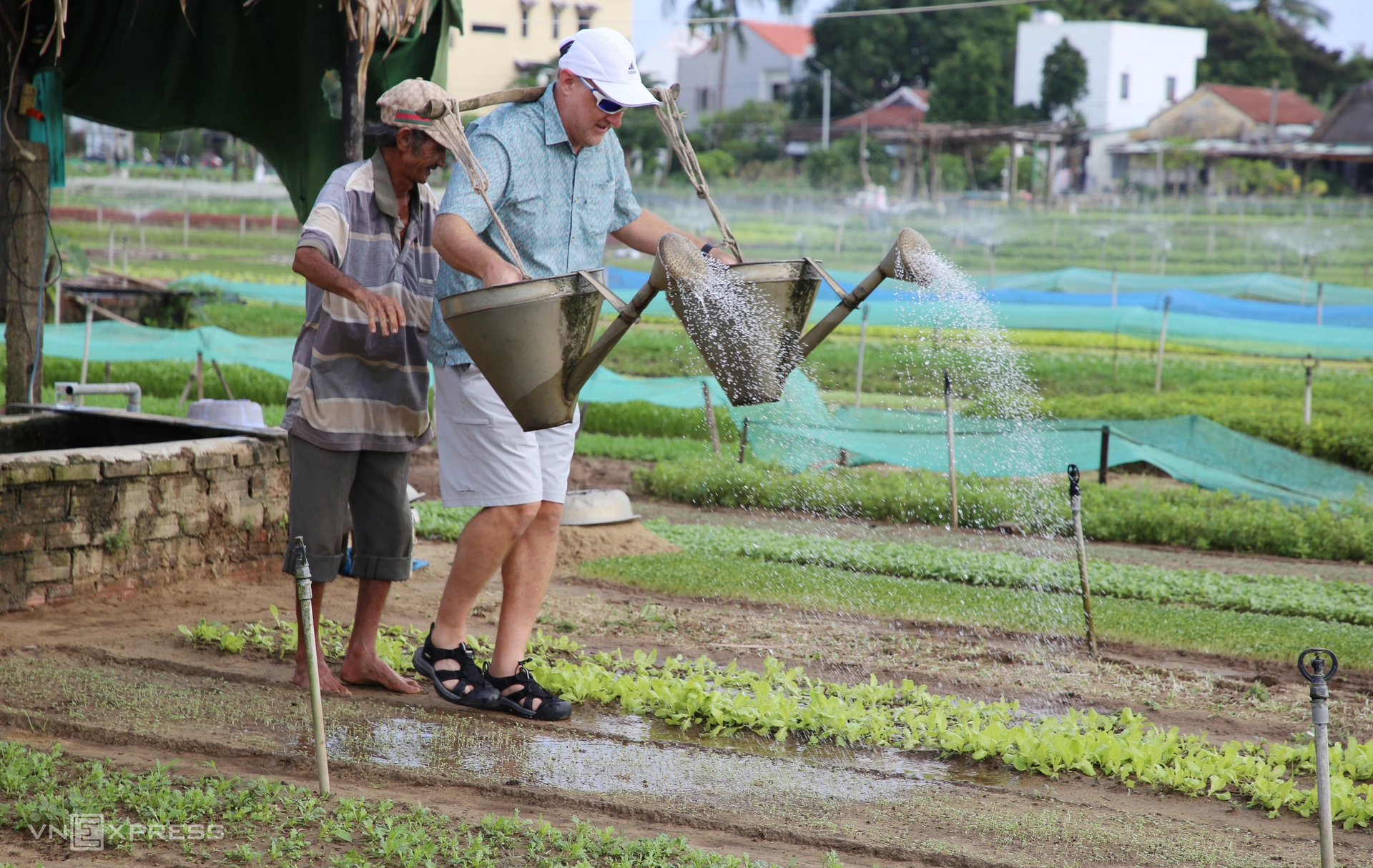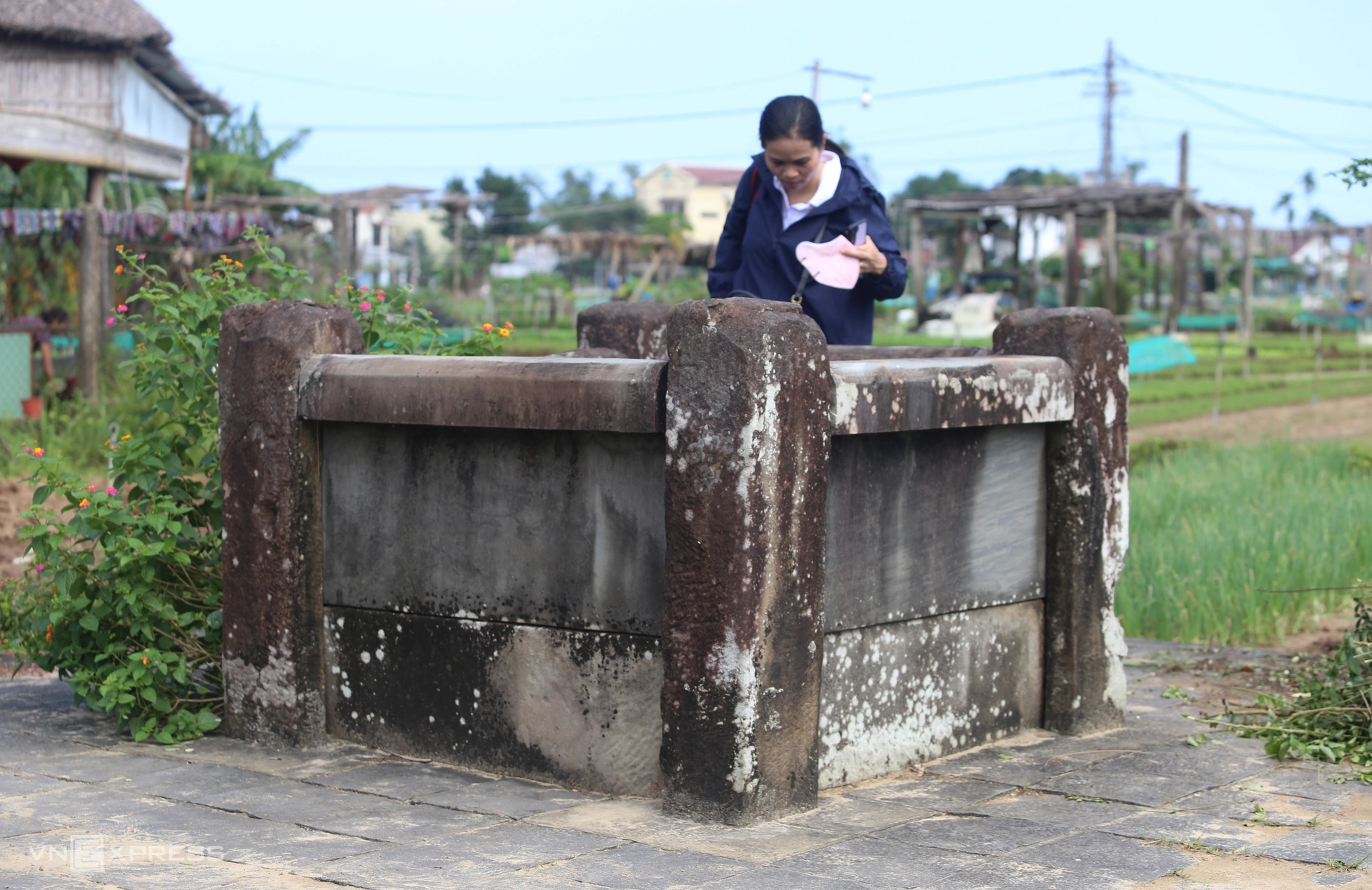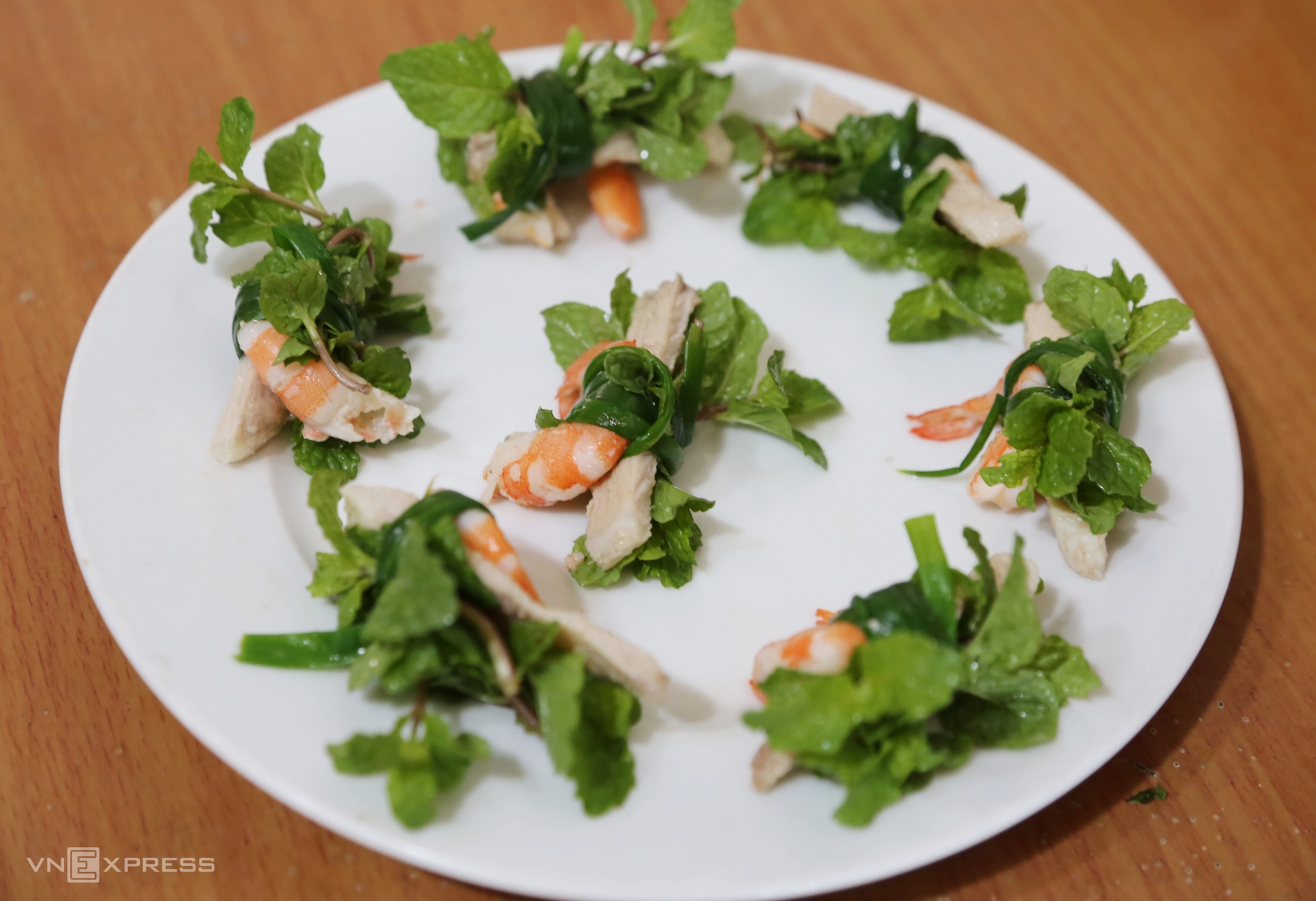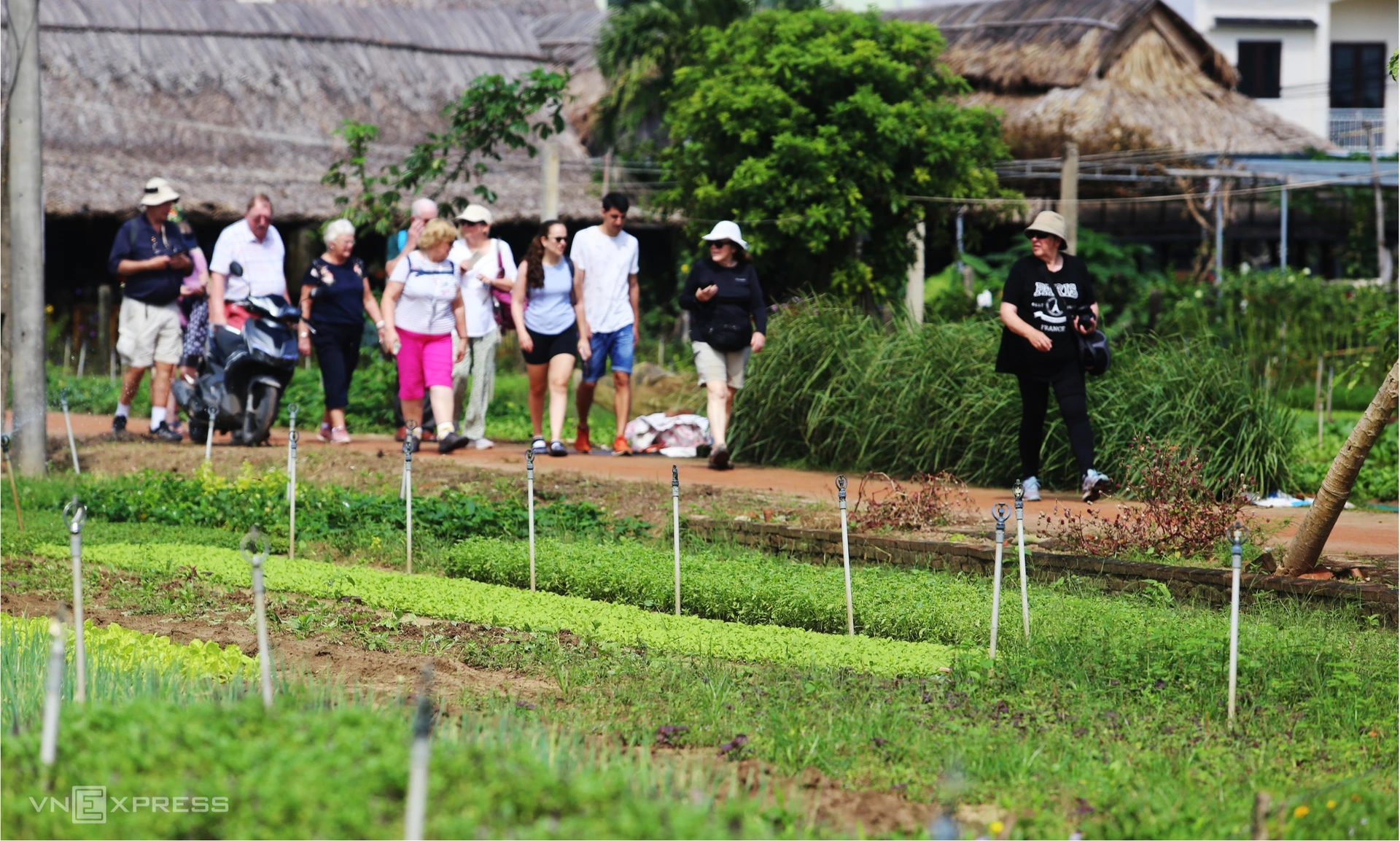On the morning of November 15, Tra Que vegetable village in Hoi An was honored by the United Nations Tourism Organization as the "World's Best Tourism Village", being the only representative of Vietnam to win this award in 2024.
Tra Que vegetable village was formed in the sixteenth century, 3 km from Hoi An ancient town, 20 km from Da Nang. The village is located on the island, surrounded by the Co Co River and Tra Que lagoon. The advantageous soil is sandy alluvial soil, the climate is mild, so people develop long-standing organic vegetable cultivation.

Previously, vegetable gardens were planted alternately between houses and fields that were not flat because people dug their own ponds and lakes to get irrigation water. More than 20 years ago, the government planned tourism development, houses were relocated, ponds and lakes were leveled to form square vegetable fields, and the roads were straight.
Tra Que currently has 202 households, with 326 farmers, cultivating on an area of 18 hectares. People specialize in cultivating 20 types of crops, every day the village welcomes thousands of tourists to visit and experience. In April 2022, vegetable cultivation in Tra Que was recognized by the Ministry of Culture, Sports and Tourism as a national intangible cultural heritage, in the form of folk knowledge and traditional crafts.


Farmers in the village use seaweed taken from rivers, swamps, manure, and do not use chemicals and pesticides. Vegetables are guaranteed to be clean, safe for consumer health and environmentally friendly.
Every day, Tra Que is open to visitors with a ticket price of 35,000 VND per person. Visitors walk or cycle around the fields. The right time to visit is early morning or cool afternoon, both avoiding the heat and seeing the scene of labor in the fields.

At the garden, visitors experience the stages of growing vegetables with the guidance of the people. Vegetables in Tra Que are not only a daily dish in family meals, but also an indispensable ingredient to create flavors for local specialties such as tam huu (shrimp, meat, herbs), ram rolls, Quang noodles, cao lau, pancakes.
In Tra Que, people maintain indigenous vegetable varieties dating back hundreds of years. The outstanding characteristics of the traditional variety are delicious, suitable for the soil, few pests and diseases, and stable yield.
The water tank serves tourists to water Mr. Nguyen Linh's vegetables and raises more pink catfish. According to him, in addition to ornamental work, fish also eat microorganisms to keep the water clean. "In the past, people watered vegetables with buckets, but now they mainly install irrigation pumps with buckets," Mr. Linh said.

Tourists excitedly use their pairs to carry two buckets of irrigation water for each vegetable bed. Each time to help tourists experience, the owner of the vegetable garden is entitled to 5,000 VND from the ticket price.
Legend has it that around the eighteenth century, there was a king who traveled on the De Vong river and stopped by the village, enjoyed a vegetable and noticed that the aroma was like tea, the spicy taste was like cinnamon, and he named the vegetable village Tra Que. Vegetables grown here are more fragrant than in other lands.



In the village, there are also historical relics such as the Temple of the Earth God, the Temple of the Five Elements, the tomb of Mr. Nguyen Van Dien, the custom of worshipping Cau Bong, and customs, beliefs and culinary culture that are being preserved and promoted effectively.
After experiencing planting and taking care of vegetables, visitors go to restaurants around the field to enjoy the juice, which is pressed from the seeds of the é tree grown by the people of Tra Que. Three huu dishes at Tra Que vegetable village. This is a specialty not to be missed when coming to the vegetable village, made from shrimp, pork, and vegetables including basil and onions.



According to VnE
